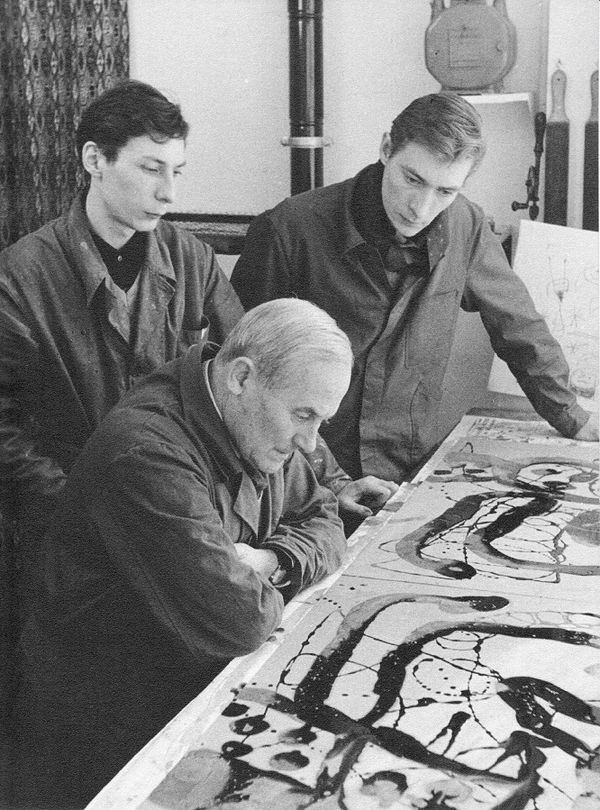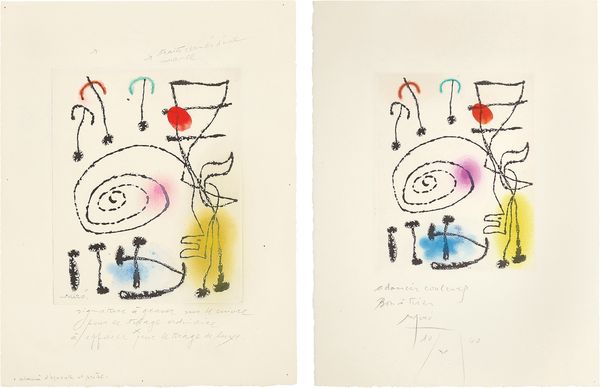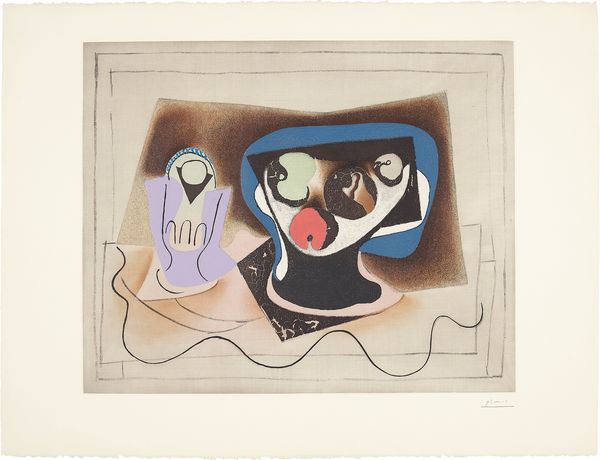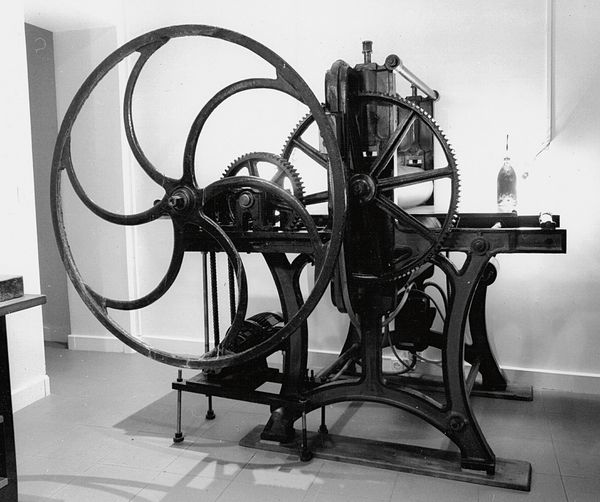Piero Crommelynck with Picasso's Piero Crommelynck, II, etching and aquatint, 1966
Fine art printmaking is among the most special of art forms. Challenging for the artist and the intaglio printmaker in every aspect: art, science, collaboration and execution. Making a print, creating an edition, is so unlike drawing on a piece of paper or painting on paper or canvas. A truly extensive world of techniques exist, and misconceptions abound — with the majority of the public only understanding a thin layer of the technical complexities and the role of the engraver. The resulting work encompasses classic craftsmanship, relationships with the artists and, ultimately, executing (to perfection) the imagery the artist wants to create.
This is especially true when working on a copper plate. Metal and acid are such unstable elements that there is one moment, and this one moment only, the printmaker has to master, or the result will be ruined. So the relationship between the artist and the printmaker becomes a true matter of trust.
Piero Crommelynck's engraving tools
The group of prints and preparatory drawings on offer from the Piero Crommelynck Collection are the prized objects most directly connected to a few of the world's most recognized artists. These examples are the evidence of fruitful collaborations and pure art history, pure story behind surface decoration. Whether they be a proof: trial, working, state, good-to-print (bon à tirer) or an impression from the final edition, their provenance is the record and the most direct link to these relationships — collaborative masterpieces of creativity and innovation.
The Prince of the printmakers.
— Film director Jean-Michel Meurice on Piero Crommelynck
The Crommelynck brothers, Piero and Aldo, are two of the most important and respected intaglio engravers of the twentieth-century. Their father, Fernand Crommelynck, a Belgian playwright, wanted his sons, along with their brother Milan, to master a craft. As teenagers in the late 1940s, they were taught classical nineteenth-century traditional French intaglio printmaking by one of the most famous master printmakers before them, Roger Lacourière. They continued to work for him until 1955. It was in this studio where they were introduced to both Joan Miró and Pablo Picasso.
In 1956 the Crommelyncks set up their first work-shop in partnership with Robert Dutrou, at a "rudimentary premises in the rue de Plaisance, a gloomy little street behind Montparnasse Station where a sordid courtyard led to their tiny room..." Georges Braque, one of their father's friends, was the first to employ their skills. Later, Joan Miró arrived in a chauffeur-driven American car. Piero helped Miró with several color intaglio prints for René Crevel's La bague d'Aurore (Aurora's Ring) and worked with Braque on Les feuillages (Foliage) and other color engravings. Many of the Mirós in this collection are from this period.
(Above): Joan Miró, Piero and Aldo Crommelynck proofing plate 2 of Les géants (The Giants), lot 117 in our sale. (Estimate $3,000-5,000); (Below) Lot 109: Joan Miró La mesure du temps (The Measure of Time), 1960. A working proof with hand-coloring and printing notes by Miró (left), and the final version telling the printers the edition should match this example (right). (Estimate $4,000-6,000)
Picasso scholar and art historian Werner Spies relates: "Very few people can claim a real close and strong relationship with Picasso. Piero had it...but he was such a discreet man. It is thanks to Jacqueline that I know how frequent his knowledge of graphic processes would be fruitful and crucial to Picasso. What Piero told the artist, his work strategies, the astounding, often paradoxical manner which he used etching, was infinitely instructive." Spies calculated that Piero appears approximately 150 times in Picasso's late works. Indeed, Piero reminded him of his own father. He was tall, fair and bearded. He embodied the same charisma.
In 1959, the brothers parted from Dutrou (who went to print for Aimé Maeght) and opened Atelier Crommelynck nearby. This studio, on the rue de Gergovie, is where the wonderful color aquatints created 'after' Picasso's, Villon's and Miró's paintings (gravures d'interpretations or etched color 'reproductions') were executed along with original images from other School of Paris artists: Le Corbusier, Alberto Giacometti, Marino Marini, André Masson, Jean Arp, Zao Wou-Ki and of course Picasso.
Lot 125: After Pablo Picasso Le verre d'absinthe (Absinthe Glass), 1972. This image is based on a painting Picasso created, and it required the skills of the Crommelynck brothers who needed two years to complete the copper plates. It is a technical masterpiece in engraving, and Picasso could not have done it himself. (Estimate $9,000-12,000)
Picasso had moved to the south of France a few years prior, and it was his demanding passion for printmaking that inevitably drew the Crommelyncks south in 1963, with Picasso even moving his etching press to his home in Mougins. The family ended up spending about half the year there in what would become a fruitful decade of close collaboration and friendship: the years of Picasso's late iconic engravings: Series 347 and 156, Le cocu magnifique and La Célestine.
After Picasso's death in 1973, the brothers moved back to Paris to the studio they had opened in 1968 on rue de Grenelle, where they continued to work with a variety of artists they had collaborated with in the past, such as Marini, Hans Hartung and Paul Delvaux, and attracted a new generation of peintres-graveurs such as Richard Hamilton, David Hockney, Jasper Johns, Jim Dine and Louise Bourgeois.
Working (engraving) with Piero Crommelynck was like learning carpentry with St. Joseph.
— Jean-Pierre Pincemin
Lot 145: Richard Hamilton Picasso's meninas, 1973. Three rare progressive state proofs showing the continual work the artist and printmaker are making to the image on the copper plate — only two of each were printed before the final version. (Estimate $40,000-60,000)
Crommelynck etching press © André Morain
In the late 1980s, Piero opened his own studio and began publishing under his own name, working passionately with Sam Szafran, Pierre Alechinsky, Not Vital and other European artists for the rest of his life.






